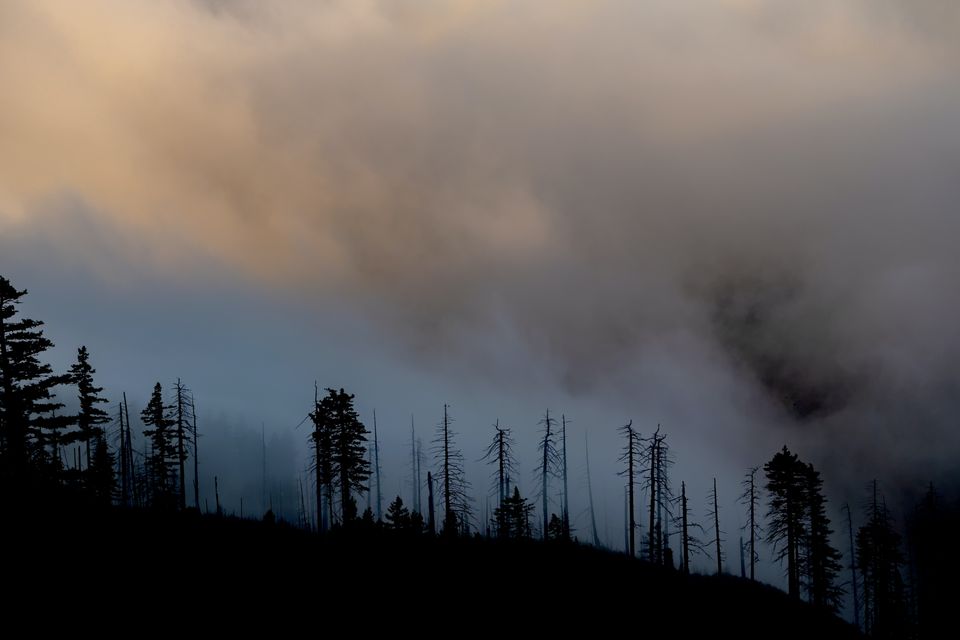Canadian Wildfires and Air Filtration

A short one this week, folks, as I am up to my neck in other projects and about to head off to Minnesota where I will be presenting at a gathering of leftists on collapse and the intersection of climate change, fascism, and the state.
Last week, much of the United States was blanketed in smoke from wildfires that have been raging across much of Canada. As of this writing, more than two thousand fires have been recorded, blowing away the ten-year average of 1,600, and this just being the start of the season. These conditions are not likely to abate soon, and for a brief glimpse into the future I present to you the NOAA's map of the effects of El Niño. If you don't feel like clicking, I'll spoil it for you: warm and dry across the north and east of the North American continent. There won't be relief from this next summer.
The last several days in Ohio, I haven't seen the sky. There has been a persistent haze, and the light has a peculiar sunset-tint to it, even at midday. But I'm nowhere near as bad as it is in New York, and even Washington DC. The air quality in New York has blown through the top of the metric and is described as "hazardous," which lies beyond "unhealthy."
Smoke in these quantities is not great for anyone's health, and particularly worrisome for someone who is ill, very young, or older. While you may have a decent setup in your home for air purification already, chances are it's not the best, and won't filter out all smoke particles, as they're pretty small. But if you find yourself downwind of a wildfire, you have a few options.
DIY Air Filters and The Like
I'm going to say up front that the efficacy of these designs are not scientifically proven, though they do very visibly remove dust and smoke from the air and get visibly dirty. Having said that, one of these builds is pretty expensive, and the other isn't nothing, which is my preferred cost for DIY work. However, our first option is nearly free:
- Boil a big pot of water. That's it. Steam from the boiling water rises, and the steam bonds with smoke particles, making them too heavy to remain in the air. These particles then just become so much wet dirt.
- Tape an air filter to the back of a box fan with the air intake arrow pointing toward the fan. In particular, you'll want a 20x20 box fan and filter, with a MERV rating of 13 or higher.
- The deluxe model: secure four 20x20 air filters to each side of your box fan. Use either a 20x20 piece of cardboard or a fifth filter for the back.
While the efficacy of these builds hasn't been scientifically established, their safety largely has. You shouldn't need to worry about the fan overheating or catching fire unless you were using a fan that was already going to contribute to the problem.
Other stop-gap fixes include damp towels tucked into windows and doorframes, and damp towels hung up in front of fans in order to trap particles in the fabric.
Coming Up
What may have escaped your radar is that Puerto Rico is currently suffering a historic and potentially deadly heatwave, with heat indices (combining temps with humidity, which is also extremely high) up to 125°F. This is truly worrying heat in a region perpetually ignored by its colonizers.
Part of why this heatwave is so terrible is due to the extremely, extremely warm ocean waters in the Atlantic. But the oceans in general are hot right now, across the globe. What effect this will have on ENSO and the just-arrived El Niño isn't entirely known. But, knowing our luck, it's probably bad.
